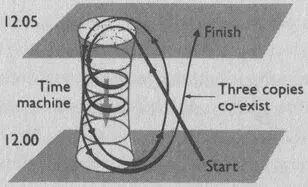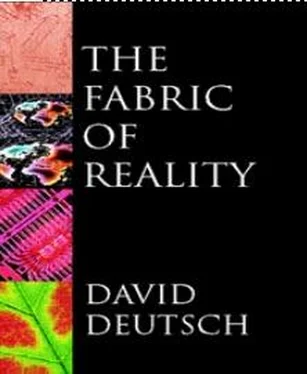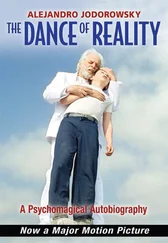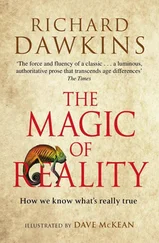David Deutch - The Fabric of Reality
Здесь есть возможность читать онлайн «David Deutch - The Fabric of Reality» весь текст электронной книги совершенно бесплатно (целиком полную версию без сокращений). В некоторых случаях можно слушать аудио, скачать через торрент в формате fb2 и присутствует краткое содержание. ISBN: , Жанр: Физика, Философия, на английском языке. Описание произведения, (предисловие) а так же отзывы посетителей доступны на портале библиотеки ЛибКат.
- Название:The Fabric of Reality
- Автор:
- Жанр:
- Год:неизвестен
- ISBN:0-7139-9061-9
- Рейтинг книги:4 / 5. Голосов: 2
-
Избранное:Добавить в избранное
- Отзывы:
-
Ваша оценка:
- 80
- 1
- 2
- 3
- 4
- 5
The Fabric of Reality: краткое содержание, описание и аннотация
Предлагаем к чтению аннотацию, описание, краткое содержание или предисловие (зависит от того, что написал сам автор книги «The Fabric of Reality»). Если вы не нашли необходимую информацию о книге — напишите в комментариях, мы постараемся отыскать её.
The Fabric of Reality — читать онлайн бесплатно полную книгу (весь текст) целиком
Ниже представлен текст книги, разбитый по страницам. Система сохранения места последней прочитанной страницы, позволяет с удобством читать онлайн бесплатно книгу «The Fabric of Reality», без необходимости каждый раз заново искать на чём Вы остановились. Поставьте закладку, и сможете в любой момент перейти на страницу, на которой закончили чтение.
Интервал:
Закладка:
Alternatively, I can follow my image into the time machine, travel round the time machine with my image and emerge again into the laboratory’s past. What happens then? Again, the clock says twelve noon. Now I can see two images of my former self. One of them is seeing the time machine for the first time, and notices neither me nor the other image. The second image appears to see the first but not me. I can see both of them. Only the first image appears to affect anything in the laboratory. This time, from the virtual-reality generator’s point of view, nothing special has happened at the moment of time travel. It is still at the ‘interaction off ’ setting, and is simply continuing to play back images of events five minutes earlier (from my subjective point of view), and these have now reached the moment when I began to see an image of myself.
After another five minutes have passed I can again choose whether to re-enter the time machine, this time in the company of two images of myself (Figure 12.2). If I repeat the process, then after every five subjective minutes an additional image of me will appear. Each image will appear to see all the ones that appeared earlier than itself (in my experience), but none of those that appeared later than itself.
If I continue the experience for as long as possible, the maximum number of copies of me that can co-exist will be limited only by the image generator’s collision avoidance strategy. Let us assume that it tries to make it realistically difficult for me to squeeze myself into the revolving door with all my images. Then eventually I shall be forced to do something other than travel back to the past with them. I could wait a little, and take the compartment after theirs, in which case I should reach the laboratory a moment after they do. But that just postpones the problem of overcrowding in the time machine. If I keep going round this loop, eventually all the ‘slots’ for time travelling into the period of five minutes after noon will be filled, forcing me to let myself reach a later time from which there will be no further means of returning to that period. This too is a property that time machines would have if they existed physically. Not only are they places, they are places with a finite capacity for supporting through traffic into the past.

FIGURE 12.2 Repeatedly using the time machine allows multiple copies of the time traveller to co-exist.
Another consequence of the fact that time machines are not vehicles, but places or paths, is that one is not completely free to choose which time to use them to travel to. As this example shows, one can use a time machine only to travel to times and places at which it has existed. In particular, one cannot use it to travel back to a time before its construction was completed.
The virtual-reality generator now has recordings of many different versions of what happened in that laboratory between noon and five minutes past. Which one depicts the real history? We ought not be too concerned if there is no answer to this question, for it asks what is real in a situation where we have artificially suppressed interactivity, making Dr Johnson’s test inapplicable. One could argue that only the last version, the one depicting the most copies of me, is the real one, because the previous versions all in effect show history from the point of view of people who, by the artificial rule of non-interaction, were prevented from fully seeing what was happening. Alternatively, one could argue that the first version of events, the one with a single copy of me, is the only real one because it is the only one I experienced interactively. The whole point of non-interactivity is that we are temporarily preventing ourselves from changing the past, and since subsequent versions all differ from the first one, they do not depict the past. All they depict is someone viewing the past by courtesy of a universal image generator.
One could also argue that all the versions are equally real. After all, when it is all over I remember having experienced not just one history of the laboratory during that five-minute period, but several such histories. I experienced them successively, but from the laboratory’s point of view they all happened during the same five-minute period. The full record of my experience requires many snapshots of the laboratory for each clock-defined instant, instead of the usual single snapshot per instant. In other words, this was a rendering of parallel universes. It turns out that this last interpretation is the closest to the truth, as we can see by trying the same experiment again, this time with interaction switched on.
The first thing I want to say about the interactive mode, in which I am free to affect the environment, is that one of the things I can choose to make happen is the exact sequence of events I have just described for the non-interactive mode. That is, I can go back and encounter one or more copies of myself, yet nevertheless (if I am a good enough actor) behave exactly as though I could not see some of them. Nevertheless, I must watch them carefully. If I want to recreate the sequence of events that occurred when I did this experiment with interaction switched off, I must remember what the copies of me do so that I can do it myself on subsequent visits to this time.
At the beginning of the session, when I first see the time machine, I immediately see it disgorging one or more copies of me. Why? Because with interaction switched on, when I come to use the time machine at five minutes past noon I shall have the right to affect the past to which I return, and that past is what is happening now, at noon. Thus my future self or selves are arriving to exercise their right to affect the laboratory at noon, and to affect me, and in particular to be seen by me.
The copies of me go about their business. Consider the computational task that the virtual-reality generator has to execute, in rendering these copies. There is now a new element that makes this overwhelmingly more difficult than it was in the non-interactive mode. How is the virtual-reality generator to find out what the copies of me are going to do? It does not yet have any recordings of that information, for in physical time the session has only just begun. Yet it must immediately present me with renderings of my future self.
So long as I am resolved to pretend that I cannot see these renderings, and then to mimic whatever I see them do, they are not going to be subjected to too stringent a test of accuracy. The virtual-reality generator need only make them do something — anything that I might do; or more precisely any behaviour that I am capable of mimicking. Given the technology that we are assuming the virtual-reality generator to be based on, that would presumably not be exceeding its capabilities. It has an accurate mathematical model of my body, and a degree of direct access to my brain. It can use these to calculate some behaviour which I could mimic, and then have its initial renderings of me carry out that behaviour.
So I begin the experience by seeing some copies of me emerge from the revolving door and do something. I pretend not to notice them, and after five minutes I go round the revolving door myself and mimic what I earlier saw the first copy doing. Five minutes later I go round again and mimic the second copy, and so on. Meanwhile, I notice that one of the copies always repeats what I had been doing during the first five minutes. At the end of the time-travelling sequence, the virtual-reality generator will again have several records of what happened during the five minutes after noon, but this time all those records will be identical. In other words, only one history happened, namely that I met my future self but pretended not to notice. Later I became that future self, travelled back in time to meet my past self, and was apparently not noticed. That is all very tidy and non-paradoxical — and unrealistic. It was achieved by the virtual-reality generator and me engaging in an intricate, mutually referential game: I was mimicking it while it was mimicking me. But with normal interactions switched on, I can choose not to play that game.
Читать дальшеИнтервал:
Закладка:
Похожие книги на «The Fabric of Reality»
Представляем Вашему вниманию похожие книги на «The Fabric of Reality» списком для выбора. Мы отобрали схожую по названию и смыслу литературу в надежде предоставить читателям больше вариантов отыскать новые, интересные, ещё непрочитанные произведения.
Обсуждение, отзывы о книге «The Fabric of Reality» и просто собственные мнения читателей. Оставьте ваши комментарии, напишите, что Вы думаете о произведении, его смысле или главных героях. Укажите что конкретно понравилось, а что нет, и почему Вы так считаете.












